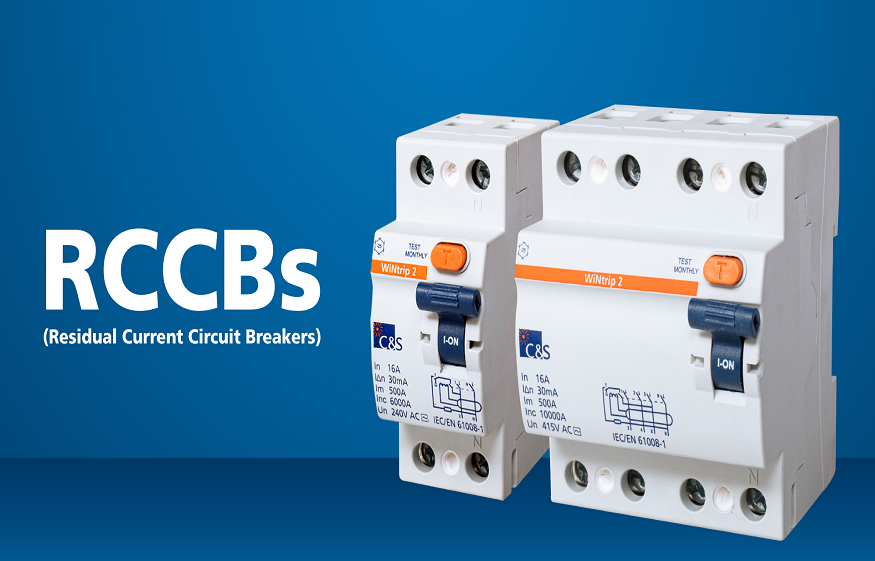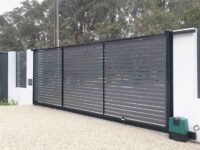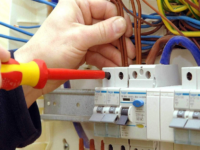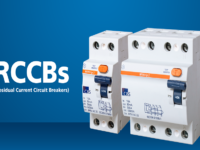Choosing the Right RCCB for Electrical Safety

In today’s world, where electrical safety is paramount, using the right Residual Current Circuit Breaker (RCCB) can make a significant difference in preventing electrical hazards. Whether it’s safeguarding a family home or securing an industrial facility, the proper RCCB ensures peace of mind by detecting and disconnecting electrical leakage currents effectively. Understanding the different types of RCCBs and their applications is crucial for selecting the systems that best match your needs. In this blog, we’ll explore the functionality, types, and benefits of RCCBs, helping you make informed choices tailored to your specific safety requirements.
Understanding RCCB
An RCCB, or Residual Current Circuit Breaker, is an essential electrical safety device designed to prevent electric shocks and electrical fires. It achieves this by detecting discrepancies between live and neutral wires and tripping the circuit if an imbalance is detected. This imbalance suggests a leakage current, which could potentially lead to dangerous scenarios or power loss.
By quickly disconnecting the electrical circuit, RCCBs protect both individuals and property from electrical hazards. With modern electrical safety increasingly reliant on advanced protective devices, RCCBs have become a fundamental component in both homes and industrial installations.
Types of RCCBs Explained
- Single-Phase RCCBs
Single-phase RCCBs are frequently utilized in domestic environments, tailored to safeguard single-phase circuits usually present in household settings. These devices offer critical protection against earth faults and short circuits, ensuring safety for regular home electrical systems. They are considered the best RCCB for home use due to their straightforward installation and reliable performance.
- Three-Phase RCCBs
For industrial settings with greater power requirements, three-phase RCCBs are the ideal solution. They handle the complexities of three-phase power systems common in industrial environments, ensuring comprehensive protection against leakage currents. These RCCBs protect high-power equipment and prevent costly downtime resulting from electrical faults, making them invaluable in commercial applications.
- Type AC RCCBs
Type AC RCCBs are sensitive only to alternating current (AC) leakage. They are suitable for installations where the power supply is primarily AC without significant electronic equipment that might cause pulsating DC or other challenges. Known for their cost-effectiveness, they offer a practical solution for standard household circuits, reflecting a favorable RCCB price suitable for basic applications.
- Type A RCCBs
Type A RCCBs detect both AC and pulsating DC currents, providing robust protection in environments that contain a mix of traditional and modern electronic devices. This versatility is particularly important for homes and businesses using complex electronic systems that generate pulsating DC. While RCCB residual current circuit breaker devices of this type might have higher upfront costs, their enhanced functionality justifies the price, ensuring comprehensive safety measures in a variety of settings.
Benefits of RCCBs
The advantages of installing RCCBs extend across both residential and commercial environments. They are essential for preventing electric shocks, offer reliable protection against electrical fires, and enhance overall system safety by quickly responding to deviations in current flow. Additionally, RCCBs aid in the efficient management of electric circuits by minimizing maintenance requirements and preventing system downtimes that might influence productivity.
Installation of RCCBs in homes or industries ensures compliance with safety standards, providing peace of mind that safety considerations are adequately addressed. Their adaptability to different circuit setups further enhances their utility, making them a worthwhile investment regardless of the price of RCCB involved.
Conclusion
RCCBs play an indispensable role in maintaining electrical safety across various settings, preventing electrical mishaps and ensuring stable power distribution. By choosing the appropriate type of RCCB, whether for home or industrial use, you can secure your property and protect your loved ones or workforce.
As electrical systems become more complex, the relevance of RCCBs continues to grow, highlighting their value in modern electrical safeguards. Consider your needs, potential risks, and the specific environment when evaluating RCCB MCB combinations to ensure optimal electrical safety.
FAQs About RCCBs
- What’s the difference between RCCB and ELCB?
Although both RCCB and ELCB offer protection from electrical faults, an RCCB (Residual Current Circuit Breaker) senses discrepancies between live and neutral currents, whereas an ELCB (Earth Leakage Circuit Breaker) triggers when it detects voltage on the earth line.The sensitivity and precision of RCCBs make them more suitable for modern electrical configurations, whereas ELCBs are becoming less common in favor of RCCBs. - How does an RCCB prevent electrical fires?
An RCCB breaker prevents electrical fires by identifying leakage currents that could potentially ignite surrounding materials. By promptly disconnecting circuits experiencing such leaks, RCCBs avert the buildup of hazardous heat, thereby significantly reducing the risk of fire in both residential and industrial premises.
- Is an RCCB mandatory for new installations?
In many regions, installing RCCBs is a mandatory requirement for new electrical installations to comply with updated safety regulations. Implementing RCCB for home and industrial settings prevents the likelihood of electrical hazards and ensures adherence to electrical safety standards.
- Can RCCBs handle high-power devices?
Yes, RCCBs are designed to handle high-power devices effectively, especially when appropriately sized and rated to match the power demands of the equipment. Three-phase RCCBs, in particular, are suited for industrial machinery and ensure system integrity, protecting against faults irrespective of the RCCB electric load involved.
- What regular checks are needed for RCCBs?
Regular checks for RCCBs include testing the functionality using the test button and monitoring for signs of wear or mechanical damage. Periodic inspections by qualified professionals can ensure that the RCCB breaker remains operational and effective in providing safety, adapting checks to accommodate the specific RCCB price and quality standards expected from the device.





